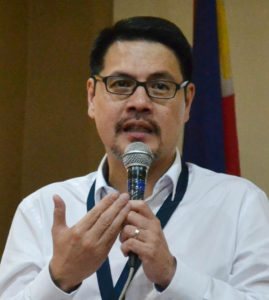 For Series 1, click here.
For Series 1, click here.
For Series 2, click here.
We have previously mentioned that while the initial draft of the Customs Modernization and Tariff Act focused on the adoption of the Revised Kyoto Convention, the final version not only adopted the RKC and the World Trade Organization Trade Facilitation Agreement but it also included revisions of the old law based on proposals from the private and public sectors as well as inclusion of additional anti-smuggling provisions. As a result, the CMTA has radically departed from many of the concepts and policies under the old law.
New Concepts. We have outlined below many of the major concepts and policies as originally provided under the CMTA, as follows:
- Expansion of the customs mandate to include trade facilitation;
- Promotion of ‘paperless’ transactions through the use of information and communication technology;
- Definition of “free zones” to harmonize rules and regulations governing all special economic zones, free ports and similar authorities;
- Provision for tax and duty status on ‘relief consignments’ to, among others, promote donations and international aid during calamities and major disasters;
- Provision for legal interest in case of non-payment of duties and taxes;
- Procedure for advance ruling to allow early resolution of customs issues even if there is yet no actual importation involved;
- Provision on ‘Authorized Economic Operator’ or AEO, an expansion of the original concept of ‘Authorized Operator’ under the RKC and an adoption of the expanded program of the the World Customs Organization (WCO) to promote both trade compliance and security in the supply chain;
- Definition of ‘alerts’ to harmonize and simplify rules on the apprehension of shipments, to make the process transparent for the trading community, and to prevent abuse by customs enforcement officers;
- Provision for summary remedies such as distraint on personal property and levy on real property to collect duties, taxes and other charges arising from a customs audit;
- Creation of a Forfeiture Fund for the purpose of outsourcing customs functions, facilitating processes, capacity building, and modernization through automation; and
- Creation of a Congressional Customs and Tariff Oversight Committee to oversee the implementation of the CMTA.
Revised Policies. Many policies under the old law have likewise been revised or amended such as the following:
- Requirement that majority of the Deputy Commissioners must come from the ranks;
- Provision for the mandatory transfer of assessment officers after 3 years;
- Redefinition of the term ‘declarant’, to allow importers to transact with the bureau, either directly or through authorized representatives;
- Provision for ‘restricted imports’ to cover imports that are generally prohibited unless given prior permits from certain regulating agencies;
- Provision to allow motion to quash or recall of a Warrant of Seizure to prevent delay in the processing of shipments;
- Procedure allowing the submission of provisional goods declarations in cases of incomplete documents or information necessary to file the import entry;
- Additional conditions for the exercise of the power to visit and inspect commercial establishments by non-customs personnel;
- Provision for ‘transit’ shipments as against ‘transshipment’;
- Redefinition of the concept of ‘abandonment’; and
- Procedure allowing settlement while forfeiture proceedings are ongoing.
Implementation. Once fully implemented, the CMTA should in general provide for (a) less discretion on customs decision-making, (b) adoption of internal best practices, (c) clear, simplified and harmonized processes, and (c) reduced penalties for errors and omissions.
Given the scope of work required, full implementation of CMTA will take years, albeit many of the major policy reforms will be issued piece-by-piece.
The author is an international trade, indirect tax (customs) and supply chain expert. He provides advisory and training service to most of the top corporations and industry associations. For questions, please email at agatonuvero@customstrade.asia or agatonuvero@yahoo.com.












